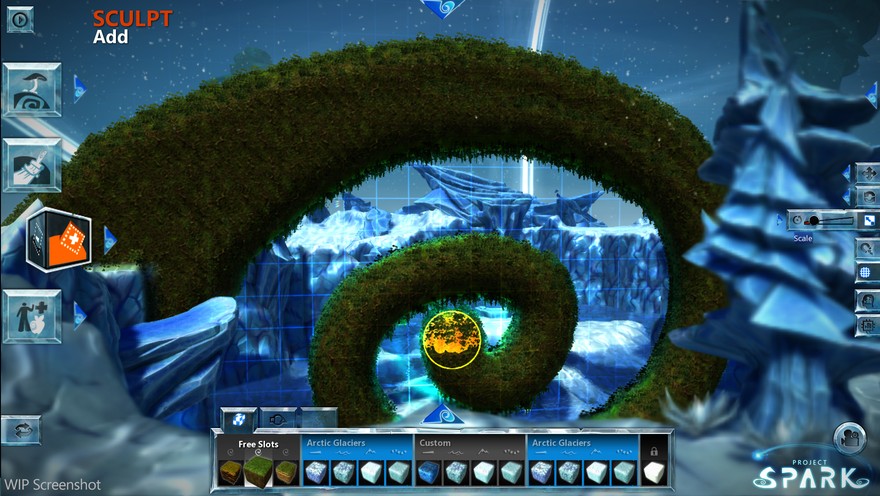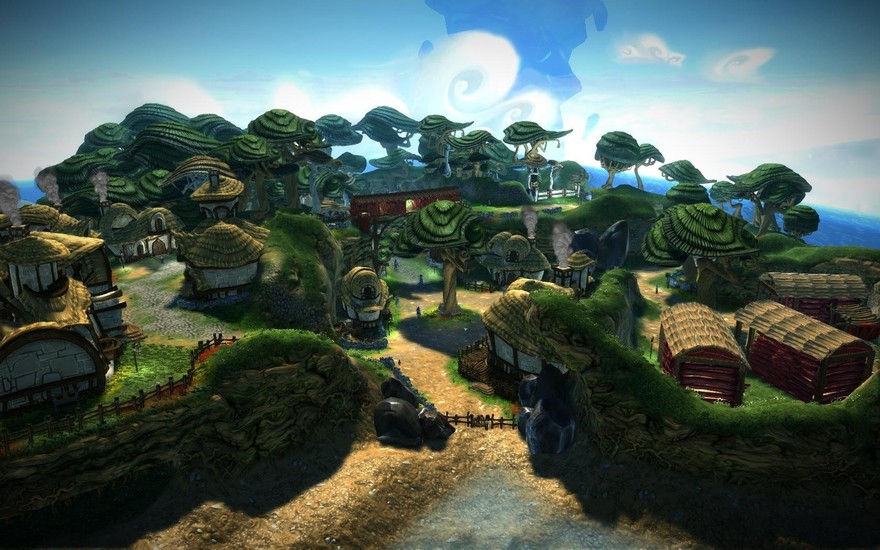When I loaded up Project Spark, a video launched in which a kindly dying star who sounded a little like a cross between Chris Parnell and Lawrence Fishburne asked me “what kind of spark will [I] be, a player or a creator?” As Red Dwarf Fishburne assured me that he would love and support me no matter what choice I made, and my twinkling little avatar flitted back out through the Suess-ian forest corridor of the introductory video, a punchline from Patton Oswalt’s My Weakness Is Strong swam into my head. It’s the one where Patton explains the sudden proliferation of self-checkout lines in grocery stores: “Because my grocery store got all my letters where I said ‘I want to be a checkout clerk!!’”
As if my position on my couch, beer in one hand and controller in the other, were not indication enough: Yes, Project Spark, I’m here to play a videogame. But you don’t really “play” Project Spark. In fact, I don’t think I’m going too far in saying that “playing videogames” is not really what Project Spark is about.

What it is about, I think, is “interactivity,” a term with just a shitstorm of meaning around it in the videogame universe. It’s a tried and true watchword in videogame PR that dates back at least to the Powerglove, but where it used to mean things like, “your NPCs have a few extra pre-programmed responses,” or “now the fire extinguishers totally explode when you shoot them,” the telescoping power of technology and the democratizing trend in game development have turned “interactive” into something more connotative of: “Here, guy, go ahead and design your own game before you play it.”
In this latter sense, Project Spark is a Promethean Fire of interactivity. In its “Create” mode, for example, which comprises a full half of the game’s interface, menus open up onto sub-menus, which give way to more and more branching sub-menus, each seemingly populated with exponentially more props, characters, biomes, surface textures, and commands. There are more customizable options for perusal here than any one person could ever wish for, hope for, or beg to stop. And even if, like me, a player has only a passing familiarity with basic programming languages, they’ll recognize Spark’s ingenious “When/Do” button-command syllogism as a huge step toward making the language of game design (relatively) idiot proof. All of this careful curation while ensuring the motions of user-created games run fluidly, the graphics look bright, clean, and lush, and the inherent learning curve of, y’know, designing a whole videogame bent straight enough that almost anyone can semi-successfully do it. And all in a beta!
Which is wonderful and wonderfully impressive in the abstract, but if you’re the type of person who plays videogames primarily in those precious crevices of time you carve out for yourself between work and dinner, early in the morning, or before bed, then all of this menu-driven, customizable vastness is overwhelming enough to make your eyes bleed. As badly as this game wants to market itself to “tinkerers” (remember how reassuringly permissive the star in the intro was) the portrait of its true end-user is someone who is serious about making a videogame and has some serious time to devote to the undertaking. Or it is a child, who just enjoys farting around. For someone like me, someone who decidedly does not meet this description, the experience of just walking through the “beginner” tutorial was like auditing an impossibly polished and meticulously-designed Computer Literacy course down at the Community Learning Annex. It taught me just enough to know how much I don’t know.

So depending on who you are and what expectations you carried into Project Spark, it’s either a genre-transcending pallette of empowerment for the digital age, or it is just not a fucking videogame. It is a platform—a remarkable platform—on which videogames might be made. To confuse the two would be to confuse a farm with a restaurant. There’s plenty of food at the farm, and the freshness and variety of the farm’s offerings likely dwarf those of even the most ambitious restaurant. But if you show up hungry, you’re going to leave pissed.
